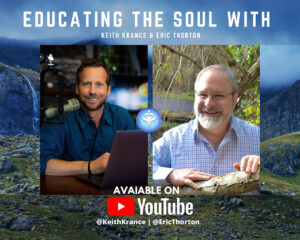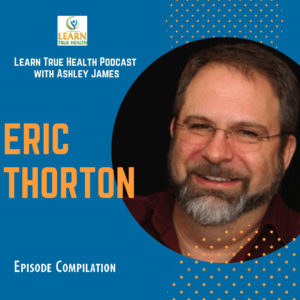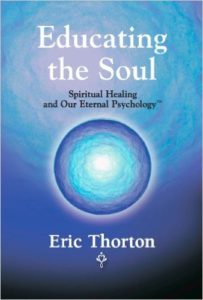Energetic PTSD

What Is PTSD?
PTSD (post-agraumatic stress disorder) is a mental health condition that some people develop after experiencing or witnessing a life-threatening event, like combat, a natural disaster, a car accident, sexual assault and long-term stress. It is normal to have upsetting memories, feel on edge, or have trouble sleeping after these types of events. At first, it may be hard to do normal daily activities, like go to work, go to school, or spend time with people you care about. But most people start to feel better after a few weeks or months. If it has been longer than a few months, and you’re still having symptoms, you may have PTSD. For some people, PTSD symptoms may start later on, or they may come and go over time.
What factors affect who develops PTSD?
PTSD can happen to anyone. It is not a sign of weakness. A number of factors can increase the chance that someone will have PTSD, many of which are not under that person’s control. For example, having a very intense or long-lasting traumatic event or getting injured during the event can make it more likely that a person will develop PTSD. PTSD is also more common after certain types of trauma, like combat and sexual assault. Personal factors, like previous traumatic exposure, age, and gender, can affect whether or not a person will develop PTSD. What happens after the traumatic event is also important. Stress can make PTSD more likely, while social support can make it less likely.
What are the symptoms of PTSD?
PTSD symptoms usually start soon after the traumatic event, but they may not appear until months or years later. They also may come and go over many years. If the symptoms last longer than four weeks, cause you great distress, or interfere with your work or home life, you might have PTSD. There are four types of symptoms of PTSD, but they may not be exactly the same for everyone. Each person experiences symptoms in their own way.
- Reliving the event (also called re-experiencing symptoms). You may have bad memories or nightmares. You even may feel like you’re going through the event again. This is called a flashback.
- Avoiding situations that remind you of the event. You may try to avoid situations or people that trigger memories of the traumatic event. You may even avoid talking or thinking about the event.
- Having more negative beliefs and feelings. The way you think about yourself and others may change because of the trauma. You may feel guilt or shame. Or, you may not be interested in activities you used to enjoy. You may feel that the world is dangerous and you can’t trust anyone. You might be numb, or find it hard to feel happy.
- Feeling keyed up (also called hyperarousal). You may be jittery or always alert and on the lookout for danger. Or, you may have trouble concentrating or sleeping. You might suddenly get angry or irritable, startle easily, or act in unhealthy ways (like smoking, using drugs and alcohol, or driving recklessly.
PTSD seems to occur after intense and prolonged energetic traumas, just like it does from intense and or prolonged physical experiences as indicated on the government website cited above. It is interesting that I often observe that the prolonged intense energetic experiences can be caused by the individual themselves. I have observed this has occurred in session with clients. Psychologists call this ‘information overload’ often leading to stress/anxiety disorders and what I call PTSD. Two examples of PTSD from trauma confirmation bias:
- Someone had experienced a roadside bomb explosion, living through it. Ten years later they are forced to drive to the roadside to fix a flat tire. They get out to take care of the task at hand when quite suddenly they experience the fear and anxiety from ten years earlier to the point their brain tricks them into thinking it is the bomb going off again.
- Someone in Africa is walking at night INNOCENTLY because they cannot sleep when a lion attacks. They live through it. The next time they head out at night for a walk, the subconscious operates on high alert, and maybe their conscious mind is on alert as well. They hear a twig snap, they suddenly panic and jump finding their brain instantly back to the event where they were attacked by the lion. They panic while reliving the first event through their eyes and emotions. They run back to the camp believing that a lion was chasing them yet there is none.
The events described above is known in psychology as Confirmation Bias PTSD. The events spurning the PTSD are normal with the re-confirmation from taught bias. It is one of the most ancient instinctual lifesavers we have remaining from our ancestors. In today’s world, it is a double-edged sword.
This is what I observe from hundreds of my clients:
Clients, for various reasons like loneliness or boredom and extra time in their lives, start searching for reasons outside them self to figure out why they are having so many aches and pains. Because of my work I see a great deal of seekers and the spiritually-minded of various sorts. Spiritually-minded people tend to be sensitive to their environment in various ways. These individuals are human, so they have many aches and pains. Naturally, they seek out answers for what ails them.
With leisure time to think and feel, because of our current cultures, their physical and mental issues move to the forefront of their consciousness. If one does not have leisure time then food and safety are at the forefront. Today many are not distracted by necessities of life they have it worked out. We simply go to the store for these. The extra time leaves them to think about what ails them more than our ancestors. This time is naturally geared towards health seeking out help for these observed aches and pains. Many great practitioners; medical, physical and spiritual professionals are able to provide them with bits of information from their vast knowledge.
As these small amounts of partial bits of information begin to mound, the person can experience legitimate confusion especially when some of the information conflicts. Instinctually, the person actively works to sort the information so they continue to seek more bits of knowledge in appointments classes and other information like the internet on how to become healthy. Ultimately, they turn to spirituality to try to find answers to their confusion.
During sessions, I see that sort of personal superstitions and resulting rules and practices have developed. The individual can become quite vulnerable and easily victimized, so these rules keep them safe but also imprison the person by creating defensive boundaries that follow their rules, effectively cutting the body off from help. These rules legitimize their own prison. They confirm they are stuck and nobody can help them. They also legitimize their bad behaviors and prevent them from getting the help they really need. As the confusion mounts, they can become desperate so they attempt self-learning and healing techniques, which fit into their personal superstitions. Ultimately, they strive for the best path for them at the moment based on their own definition of whatever that means. Unfortunately, they fall into self-diagnosing through alternate methods. Quite often, I have encountered strength testing as the self-diagnosis method, because these methods reflect their personal biases that ‘fit’ their superstitions through their confirmation biases.
Strength testing is a very weak inconsistent form of dowsing. If one takes the American Dowsing Societies courses they directly teach you the pitfalls. They will teach you that dowsing of all sorts is completely vulnerable to each individual’s confirmation biases.
All strength testing self-diagnosing is dangerous. Every person is his or her own worst biased practitioner. This also extends to using it for diagnosing others, as the practice will give you the answers according to conscious and subconscious biases the practitioners have. It is completely subconscious and innocent but it is still a fact we all have to deal with. Very often I hear a client say, ‘that makes sense to me’ or ‘that gives me shivers so I know it is true’ or ‘this is the third time I have heard that so it must be true’, or they strength test something as positive and they act upon it only to find their results are just not there. When the experience fails, it adds to the confusion and increases the anxieties of the individual seeking help.
These self-diagnosing biases also easily lead to individuals legitimize the same bad behaviors that got them where they are. They see practitioners that are very good and have a great deal to offer. They take the information home and because it is difficult or the progress is slow they use their own confirmation biases to not continue with the very relevant information that they just received. This happens very often with a practitioner informing their patient that they need psychological care, as this could force the client to look at what they had done to themselves, which threatens the very boundaries that keep them in the confusion and anxiety. The end result is long years of searching with a huge costs: emotionally and monetarily.
Of course, dream interpretations can also add to the cycles of self-abuse. Give a person a class and/or several books with their confirmation biases already developed and they are going to over analyze dreams and all sorts of other information they deem as worthy of their time. They will assign means to normal processing of their daily anxieties. Their enthusiasm using their network of little bits of information seems to cause more and more anxiety to even their dream states.
All these little events and pieces of information add up to exhaustion and more poor health by leading them to make very bad decisions that actually cause more harm than good. Major anxiety disorders and PTSD can result from intense long-term searches for truth when in fact, it is the self they have to look at in their quest for health. Those people who have found themselves caught in the aforementioned inner rat maze can easily blame very well intended practitioners for ‘not’ healing them and quite often damaging those practitioners’ reputations by telling others that they are fraudulent.
This is why I work with many psychologists that I recommend some of my clients. Unfortunately, because myself and/or the psychologist are at the tail end of often years and years of this innocent self-abuse, these clients typically have few resources left so they often cannot afford or suffer paranoia about receiving help. They do their ‘testing’, as mentioned above, and find their excuses to keep legitimize their bad behaviors. Even when provided solid guidance, they are unable to stick with the work needed because their brain has been confused from the trauma of bias confirmation and resulting PTSD.
To be very clear here, there is no bad intent by anyone finding themselves in these situations.Now let us put the energetics to this. Whatever situation we are in is all energy right?
A person is home alone for the first time in a long while. They begin to feel vulnerable because of their past experiences and possibly the many movies they have seen. (I do not watch intense movies or recommend violent video games, these can suggest too many scenarios for the subconscious mind to work with at a later date). These current feelings are due to confirmation bias from their past experience. As a result of being home alone, they feel vulnerable and anxious being on high alert listening for noises. They go to bed and they naturally have dreams again processing these same possibilities. They naturally have a very disturbing processing dream(s). Quite suddenly they awake with a startle, jumping out of their skin. They cannot remember the dreams well, but the subconscious brain is forced into reliving scenario that are from the processing dream they just had. It comes through as a very real physical feeling. They are very upset. They feel they are seeing or feeling something in the room. They panic and they go into a litany of superstitious self-diagnosing by using all the tools and patterns they have been taught and or taught to themselves. They often believe that they are being haunted by something awful, however, it is usually their own thoughts and thought forms. Their own brain’s superstitious patterns have betrayed their truth. The difficult part of this scenario is that the panic can open the energetic doors to actual predatory energies and it is possible that given time energies can actually enter into their lives, which in turn can haunt them.
This reality gives particular relevance to a Buddha’ declaration, “The mind is everything. What you think you become.”
When these events occur, I have to have my client email me permission to look into their space so I can see their energetic scenario in order to help them out of this self-imposed PTSD by letting them know if their reactions are from predatory energies or their PTSD. This follow-through assists them to slowly back away from bad habits by helping them understand what is going on and in many cases supporting them in understanding that they are not ‘going insane’ as a client once put it!
As stated at the beginning of this writing, all this is very normal and instinctive. It is what kept our ancestors alive. If our ancestors did not keep searching, growing and gathering food, they would become food and if they let their aches and pains run their lives, they would become a burden and they were often left behind to die. They simply had no time to pay attention to the very normal aches and pains of being human. Today we have a great deal of excess time as compared to our ancestors while having such easy access to way too much partial bits of information, contributing further time to worry about the issues our ancestors did not have time for. It is my belief this very important intrinsic survival instinct can become confused in today’s world. Our own survival instinct becomes the mechanism that provides a double-edged sword to produce long-term highly stressed anxiety leading to self-imposed PTSD.













